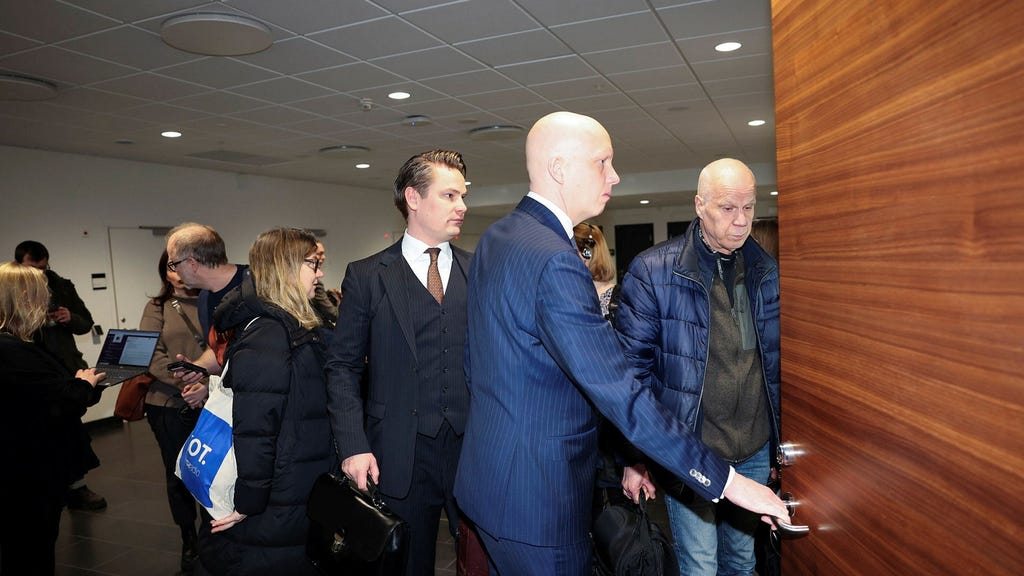Paragraph 1: The Scene Outside the Courtroom
A group of young men, all around 18 years old, gathered outside the courtroom in the basement of Attunda District Court. They were facing charges related to the murder of 39-year-old Mikael, who had been shot dead in front of his 12-year-old son in central Skärholmen on April 10th of the previous year. Despite the gravity of the situation, an air of casualness permeated the group. They seemed close, their camaraderie evident in shared jokes and laughter as they awaited the start of the proceedings. This seemingly lighthearted atmosphere contrasted sharply with the seriousness of the charges they were about to face.
Paragraph 2: Inside the Courtroom – The Shift in Demeanor
The atmosphere dramatically shifted as the group entered the courtroom and took their seats on the defendants’ side. Already present was another 18-year-old, the alleged shooter, who had been in custody since the incident. The weight of the situation seemed to finally sink in for the group. The laughter ceased, replaced by a quiet solemnity as they sat beside their lawyers. Prosecutor Ove Jäverfelt began to read the charges, outlining the accusations against each individual. The initial levity had completely vanished, replaced by the stark reality of the legal proceedings.
Paragraph 3: Pleas and Initial Statements
All defendants pleaded not guilty. The lawyer representing the accused shooter, Harri Keränen, vehemently denied his client’s involvement in the murder. While admitting that his client had handled and test-fired the murder weapon prior to the incident, Keränen insisted that his client did not pull the trigger on the night of the killing. The accused shooter remained mostly silent throughout the initial questioning, occasionally offering a fleeting smirk at certain details, refusing to elaborate further when prompted. He remained composed, flanked by his two lawyers, Harri Keränen and Nils Svantemark, as the proceedings continued.
Paragraph 4: The Harrowing 911 Call – A Wave of Emotion
A palpable shift occurred in the courtroom atmosphere when the prosecution played the recording of the 911 call made on the night of the murder. The voice of the emergency operator filled the room, asking the caller, Mikael’s 12-year-old son, the devastating question, "Did they shoot your dad?". The boy’s affirmative response, delivered in a voice choked with panic and shock, sent a ripple of emotion through the courtroom. He struggled to articulate, confirming that his father was lying on the ground. As the boy’s panic escalated, audible sobs broke out from the gallery, and even seasoned journalists observing the proceedings were visibly moved to tears. The raw emotion of the call pierced through the legal formalities, bringing the human tragedy to the forefront.
Paragraph 5: The Accused Shooter’s Reaction and Criminal History
The accused shooter, who had maintained a stoic demeanor until this point, appeared to react to the 911 recording. As the 12-year-old’s voice filled the courtroom, he lowered his gaze, staring down at the table in front of him. The prosecution’s case revealed the accused’s long-standing involvement with a criminal network in Skärholmen, describing him as the gang’s enforcer, carrying out acts of violence. His criminal record stretched back to his childhood, with his first encounter with law enforcement occurring at the age of nine for petty theft. The investigation highlighted a pattern of escalating offenses, including robbery, attempted robbery, threats, assault, and grand theft. Despite interventions by social services and placements under the care of the state, the accused was, at the time of the murder, a fugitive from one such placement.
Paragraph 6: The Weight of the Allegations and the Trial Ahead
The gravity of the charges against the accused weighed heavily in the courtroom. He stood accused of murdering a father in front of his young son, a devastating act with profound consequences. As the trial began, the evidence and testimony would be scrutinized, and the legal process would unfold. The trial was scheduled to continue until January 30th, allowing time for a thorough examination of the facts and circumstances surrounding the tragic events of that April night. The outcome would determine the fate of the accused and offer some measure of closure for the victim’s family, especially his young son, who bore witness to the unimaginable.














